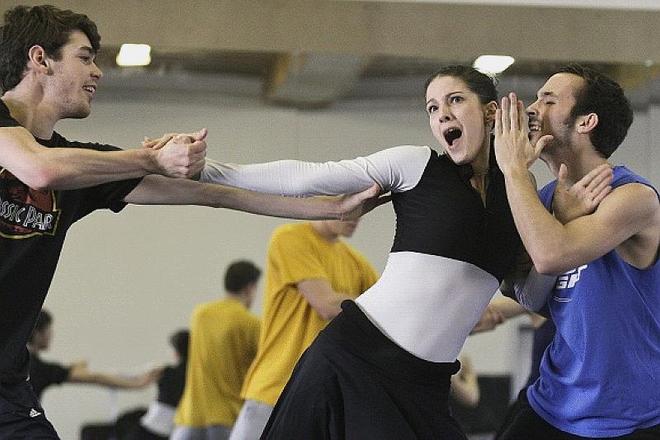AFTER a classical piece and a performance featuring contemporary Slovak choreographers and their works, the Balet Bratislava ensemble has now chosen some Czech pieces. The performance, called Czech In: Kylián Vaculík, combines two shorter pieces by the renowned artist of Czech origin Jiří Kylián and choreography by Czech Libor Vaculík.
Six Dances by Kylián, who works for the Netherlands Dans Theatre, is a light, delicate, plot-less work set to music by Mozart, offering humour and fun. Kylián’s assistant Roslyn Anderson described it – at a press conference in Bratislava on March 6 – as a dessert completing a whole reception which also includes something more substantial: the quite different Falling Angels, an opus for eight female dancers to the frenetic score of Steve Reich’s Drumming. The dance is very demanding, with performers pushed to the very edge of their abilities, thus the name. However, it is very impressive for audiences, Anderson said.
The other choreography, Slavonic Duets by Vaculík, received its Slovak premiere.
“I made an intentionally dance-symphonic work without plot or specific story,” the TASR newswire quoted Vaculík saying about his work. He took two contrasting works by Czech composer Antonín Dvořák – the energetic Slovanské tance (Slavonic Dances) and the fragile and intimate Moravské dvojzpěvy (Moravian Duets) – and choreographed them for five male and five female dancers.
Balet Bratislava says it will always invite one guest ensemble from the Czech Republic to complete the evening as a surprise, and on the first three performances, on March 16, 17 and 25, this will be the dance troupe of the National Theatre Prague, with the choreography Lyrická (Lyrical) by Peter Zuska. The piece is inspired by Ukrainian and eastern Slovak ballads.
Mirka Kovářová, the executive manager of Balet Bratislava, told a press conference that after its recent modern piece, 3Balet, Czech In represents more neo-classical style, albeit in its most demanding technical and physical form. She added that as it was not possible to offer an evening consisting of choreographies only by Jiří Kylián, so the idea of combining works by masters of dance that have a Czech origin proved appealing.



 Rehearsing for Czech In. (source: Ctibor Bachratý)
Rehearsing for Czech In. (source: Ctibor Bachratý)